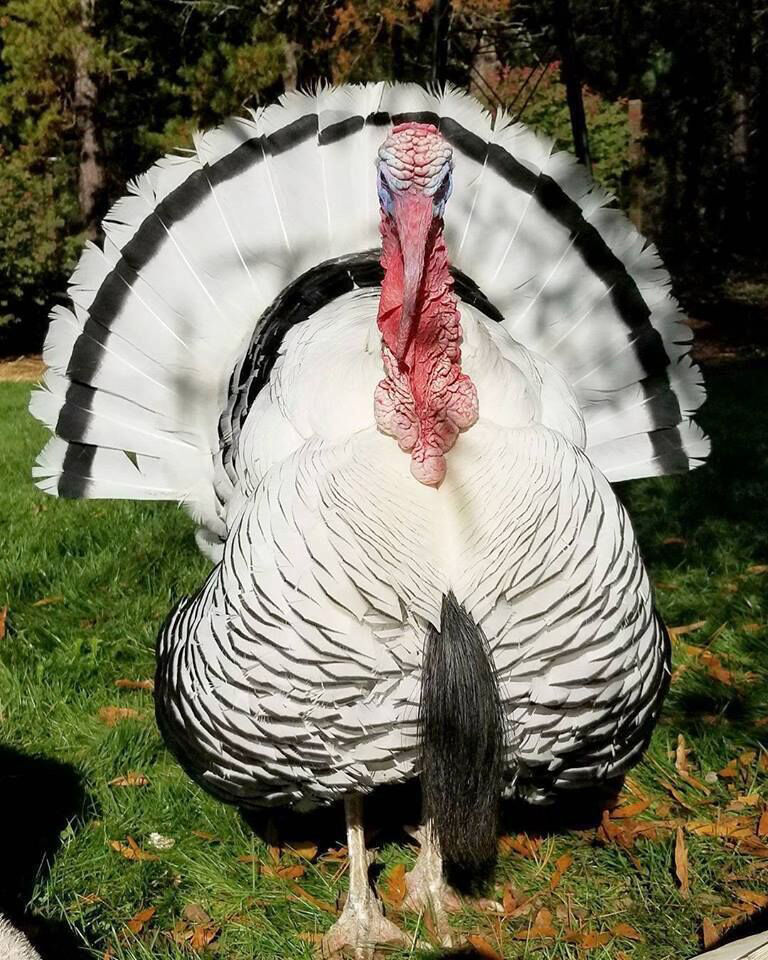If you have chickens, you already know the basics of raising poultry.
Are you looking to take your backyard flock to the next level by adding in a couple turkeys? Turkeys can make a fun backyard addition to provide your family with unique companionship, great life lessons and nutritious meat and eggs. But they can take a bit more TLC than backyard chickens, especially from the start.
Once you start them strong, you’ll likely notice fun, friendly personalities and exceptionally quick growth. Below are a few considerations before you start raising turkeys.
The road to a mature tom (male turkey) or hen (female turkey) begins with a baby turkey, or turkey poult. Temperature and brooder set-up for raising poults is similar to baby chicks. The biggest difference will be their starter-grower feed, as turkey poults require much higher protein levels than baby chicks.
Once poults are 6 weeks old, they can be transitioned from brooder to coop. Poults grow quickly after leaving the brooder, often becoming dominant birds in a mixed flock.
Adult turkeys thrive in spacious outdoor areas as a group of at least three to six birds. Some backyard flock raisers also choose to keep a free-range turkey flock, with a predator-proof fenced area for nighttime protection.
Because of their size, turkeys will need slightly more space than other poultry counterparts. Coop space recommendations per turkey depend on age: 0-8 weeks requires 2-2.5 square feet; 8-16 weeks requires 3-4 square feet; 16-20 weeks requires 5-8 square feet; 20 weeks to market weight requires 6-10 square feet.
You will also need a considerable amount of outdoor space for turkeys to free-range. It is recommended to have one-half acre for every 12 adult birds.
Choosing turkey breeds
Both toms and hens can be raised for meat, with the main difference being bird size. One of your first choices will be whether to raise traditional or heritage turkey breeds. Traditional turkey breeds are known for fast growth and high production.
Broad Breasted White or Bronze turkeys can grow to 30 pounds in just five months. Both breeds are raised commercially.
Heritage turkeys are gaining in popularity. These turkeys are defined by their historical origins and tend to be smaller in size.
Breeds like the Royal Palm, Bourbon Red turkey or Narragansett turkey provide backyard flocks with a pop of color and beautiful plumage.
For a turkey to be considered a heritage breed, it must meet three criteria as outlined by The Livestock Conservancy: Toms and hens must mate naturally to preserve the genetic family tree; The heritage turkey should have a long, productive lifespan in the outdoors; Heritage hens are generally productive for 5 to 7 years and toms for 3 to 5 years; Heritage turkeys should have a slower growth rate to develop a strong skeleton before building muscle mass. It usually takes seven months for them to reach their mature weight of 15 to 25 pounds.
What to feed turkeys
Since turkeys have different growth and nutrition requirements than chickens, it can be helpful to raise them separately, especially in the beginning. Turkeys need a high protein diet when they are young as they grow and gain muscle quickly. To support this growth, feed a complete feed with 30 percent protein until the birds are 8 weeks old. At 8 weeks of age, switch to a 20 percent protein feed until they reach market weight.
Since most turkeys are raised as meat birds, many people wonder, “Do turkeys lay eggs?” The short answer is yes. Turkey eggs are known to be just as nutritious as chicken eggs, with a strong shell and larger yolk. Hens lay an average of two eggs per week compared to the daily egg of a chicken. If you are raising hens for eggs, calcium becomes the key nutrient they need to stay healthy while laying.
Raising turkeys and chickens together can be a delicate topic. Some enthusiasts integrate the two species well while others have noted disease issues. Be sure to research comingling in advance and always follow a bird integration plan.



